SPL 1451 Ono Island Project
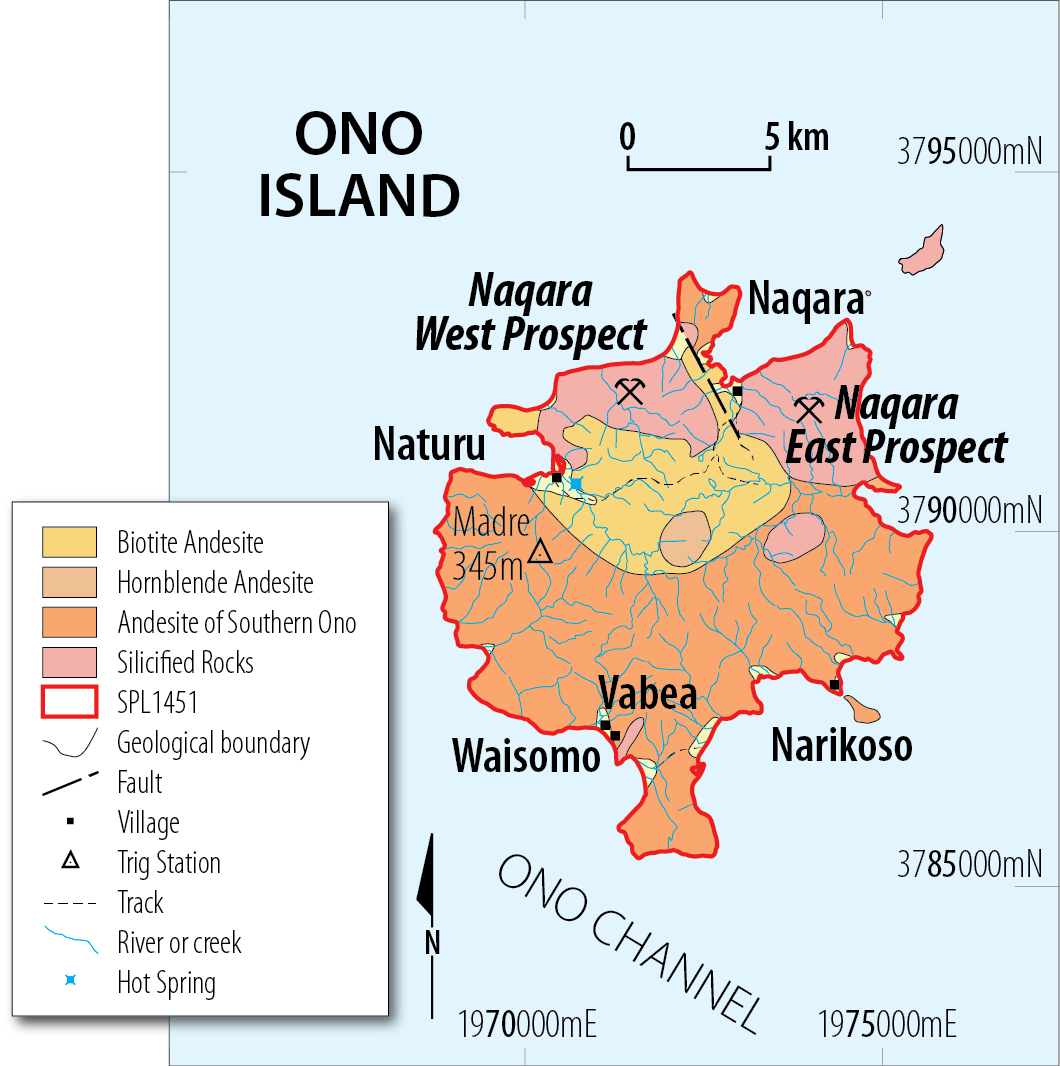

Ono Island Project
Dome proposes to mine and extract the magnetite, ilmenite and other heavy minerals from the sands in the Sigatoka River. In addition, subject to Government approvals, the processed sand and gravel tailing that is not required for local use after removal of commercial heavy minerals may be sold for land reclamation purposes adding further value to the iron sand mining operation. High-sulphidation epithermal gold-silver mineralisation is the primary target based on interpretation of results recorded by previous explorers in the area, who reported anomalous stream sediment geochemistry and mapped surface exposures of hydrothermal rock alteration and silicification. Although not outcropping, the gold mineralisation is expected to lie at depth below two zones anomalous in gold, copper, mercury, antimony, molybdenum and arsenic soil geochemistry.
In October 2016 an offset pole-dipole IP survey was successfully completed on two adjacent high sulphidation epithermal gold prospects on the northern part of Ono Island, known as Naqara East and Naqara West (see ASX release dated 31 October 2016). These had previously been covered by soil sampling in 2013 and geological mapping campaigns in 2014 that identified areas of intense argillic alteration and zones of silicification and anomalous geochemistry, proximal to the northern rim of a volcanic caldera (Figure 2). interpretation of results recorded by previous explorers in the area, who reported anomalous stream sediment geochemistry and mapped surface exposures of hydrothermal rock alteration and silicification. Although not outcropping, the gold mineralisation is expected to lie at depth below two zones anomalous in gold, copper, mercury, antimony, molybdenum and arsenic soil geochemistry.
Dome proposes to mine and extract the magnetite, ilmenite and other heavy minerals from the sands in the Sigatoka River. In addition, subject to Government approvals, the processed sand and gravel tailing that is not required for local use after removal of commercial heavy minerals may be sold for land reclamation purposes adding further value to the iron sand mining operation.
The two arrays on the eastern Naqara prospect produced coherent data showing a NNW trending linear resistivity anomaly that was evident nearer surface and coincident with a distinct chargeability anomaly at increasing depth. The relationship between resistivity and chargeability is poor near surface at Naqara West, but there are indications of increasing chargeability with depth, although the response is not as persistent nor as strong as at the Naqara East prospect. In part this may be due to the chargeability response (particularly at the Naqara West prospect) being impacted by the proximity and incursion of seawater and the rugged and more deeply incised terrain in the west. This contributed to “low earth resistivities” particularly for deeper readings (below 300m to 400m).
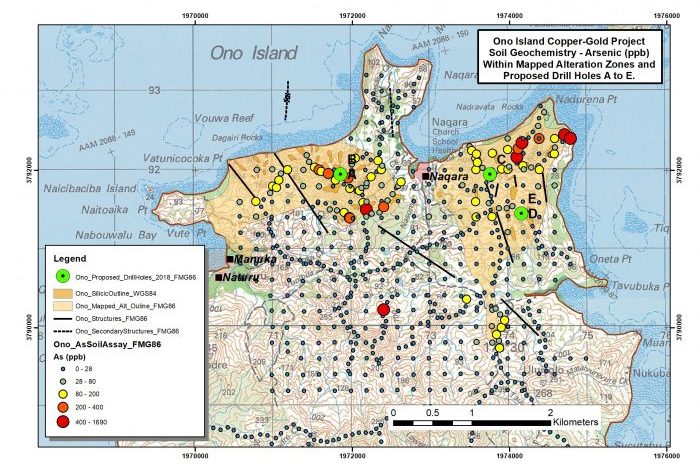
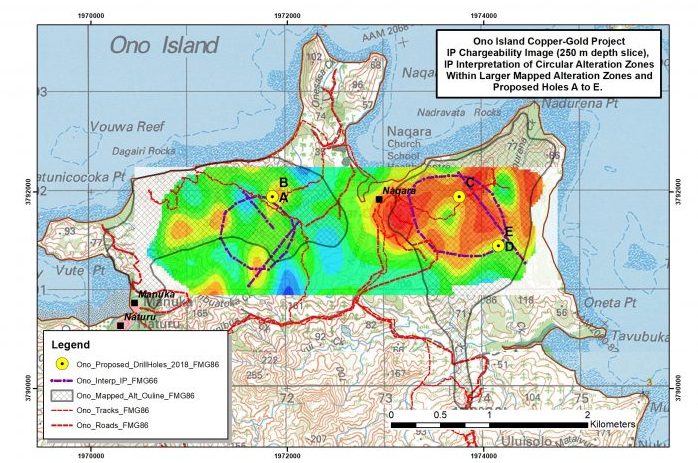
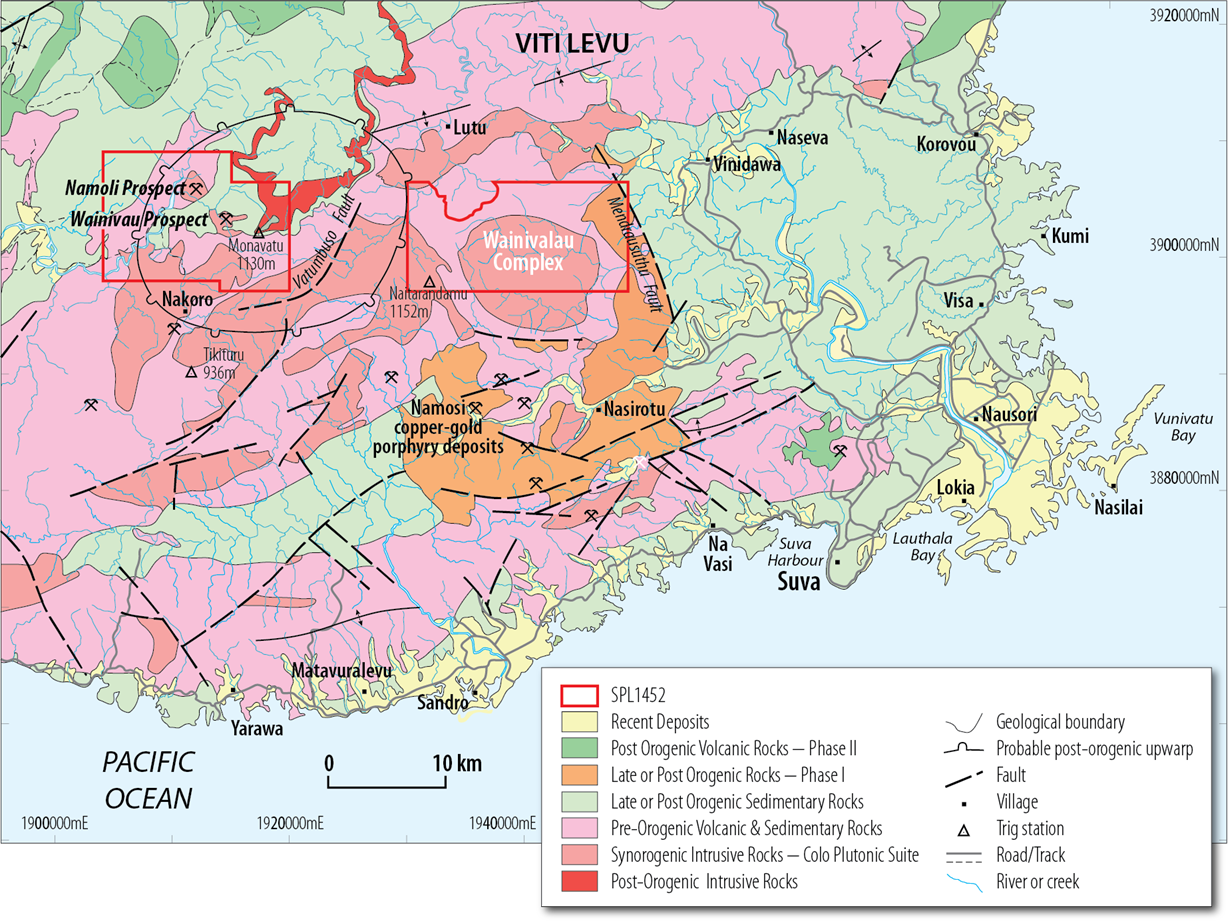
An initial 7-hole exploration diamond drilling program has been completed. (see ASX announcement dated 31 July 2018).
Five drill holes were initially proposed (Targets A to E), and another two targets (F and G) were added during the drilling program. Seven diamond holes (ONODDH001 to 7) were drilled to test the Naqara East and Naqara West prospects. One drill hole ONODDH002 was twinned due to hole problems, with the second hole named ONODDH002A. A drill hole location map is included as Figure 6.
The targeting of these drill holes was based on the combined results of the ionic leach soil sampling, geological and alteration mapping and the IP geophysical survey.
Drill hole ONODDH001 (Naqara East), returned anomalous copper assays (to 0.3% Cu) and anomalous Molybdenum assays (to 0.2% Mo). The best Mo intercept is 5.05 m @ 0.0643% (643 ppm Mo), from 323 to 328.05 m. This intercept comprises 5 contiguous one metre samples ranging from 110 ppm to 2040 ppm Mo.
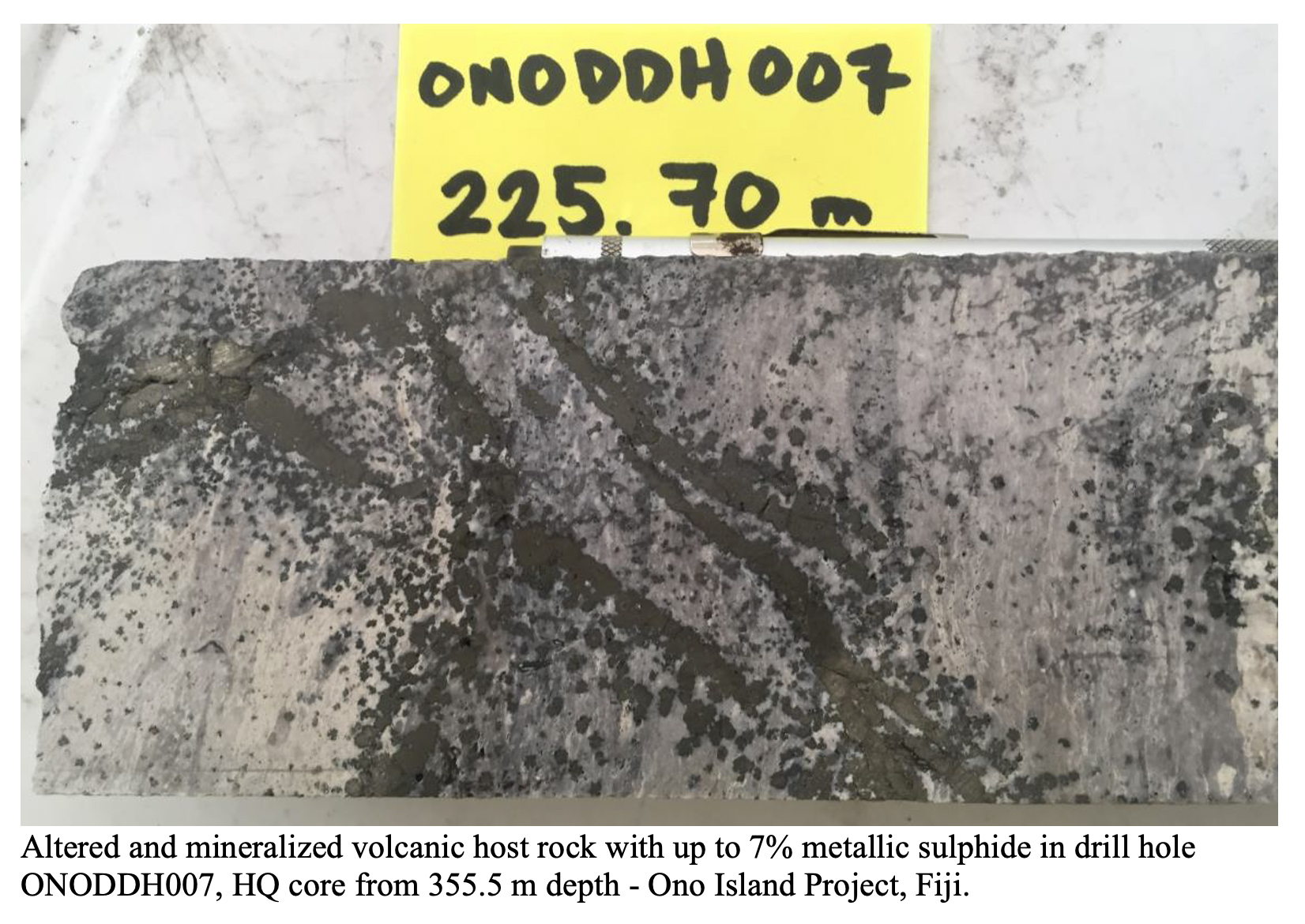

The gold-silver assay results are slightly anomalous within areas of strong alteration and sulphide mineralisation, but are well below economic levels, with maximum assay values of 0.036 g/t Au and 3.6 g/t Ag.
The elevated Cu and Mo and weakly anomalous Au and Ag indicates a metal-bearing epithermal system is present at Naqara East, and that further exploration drilling could define gold mineralisation nearby.
In summary, a large sulphide-bearing system weakly anomalous in several metals has been defined at Naqara East prospect on Ono Island, SPL 1451. This system has many similarities to other Pacific Rim gold-copper deposits. The strong epithermal alteration, sulphide mineralisation, elevated Cu-Mo and weakly anomalous Au-Ag in drill core samples is encouraging. Additional systematic drilling is required to discover anomalous gold zones within these large sulphide bodies.


